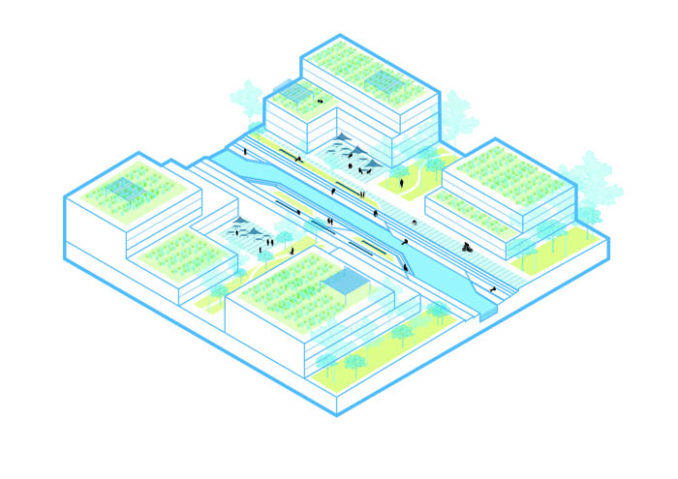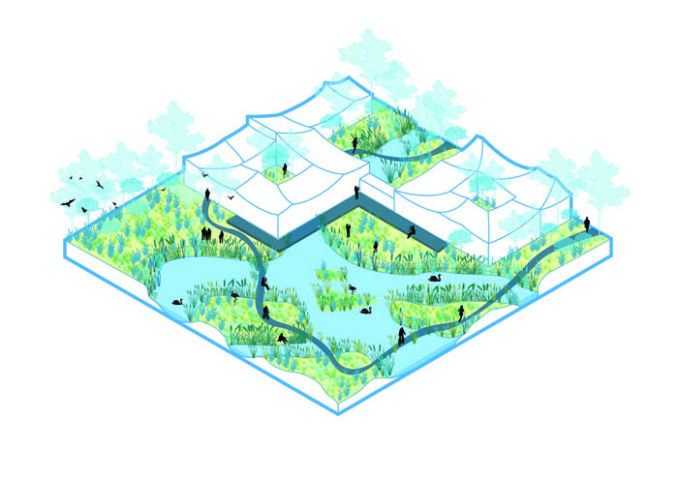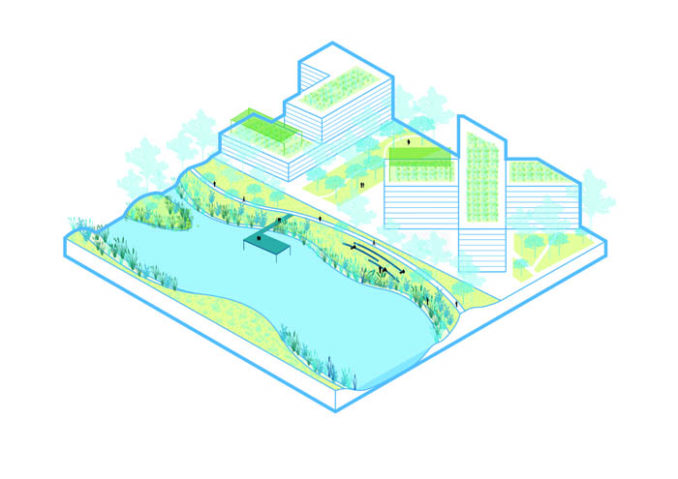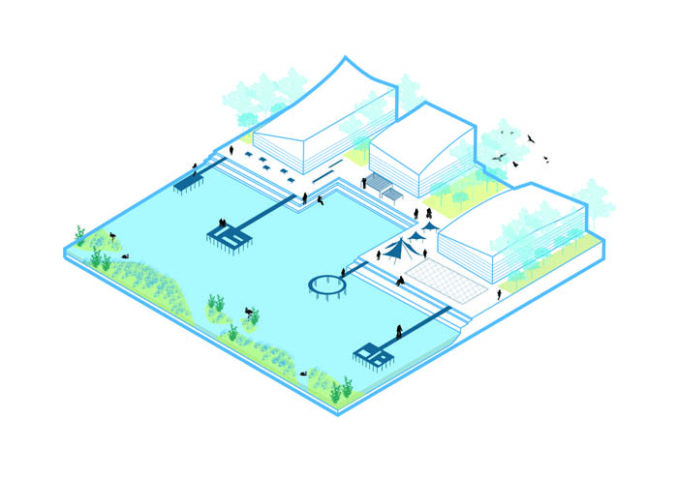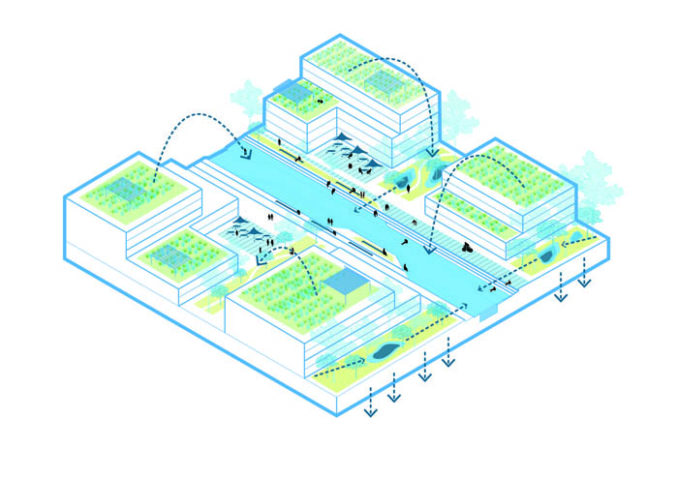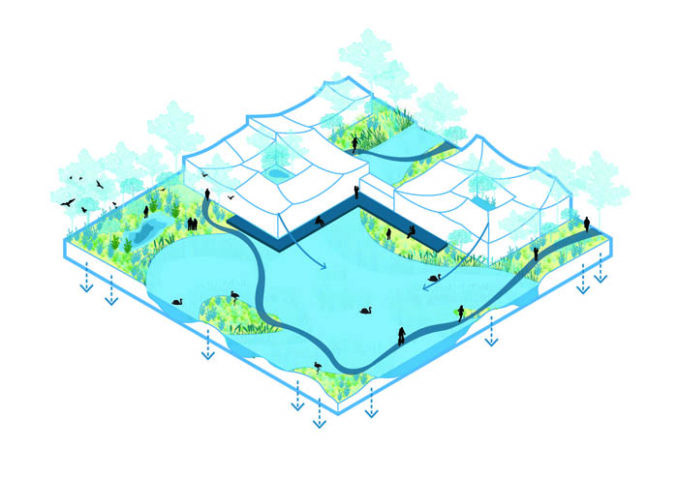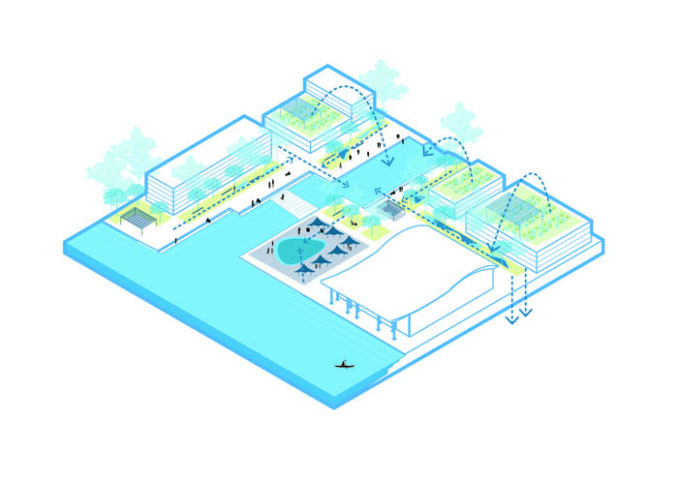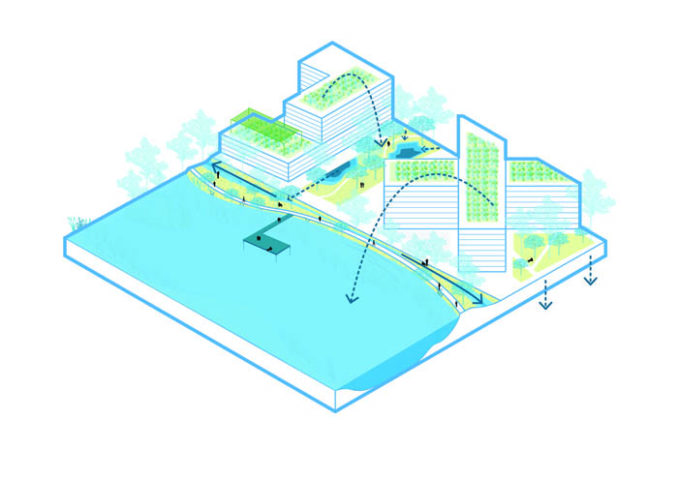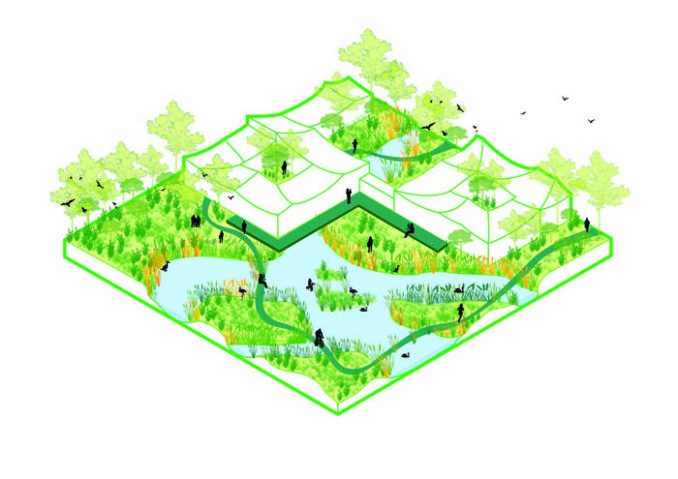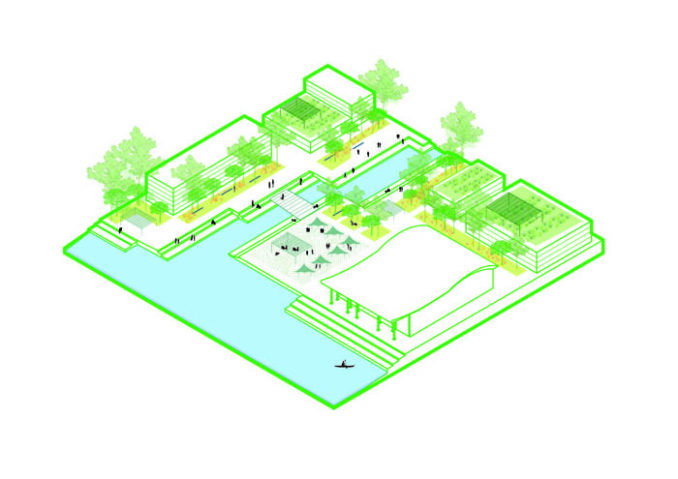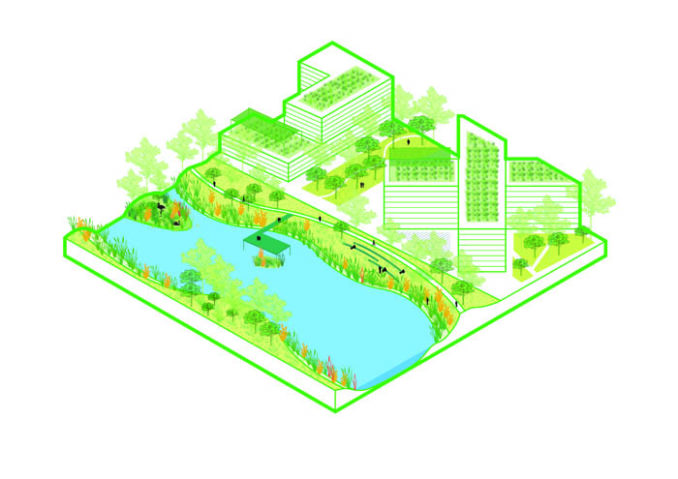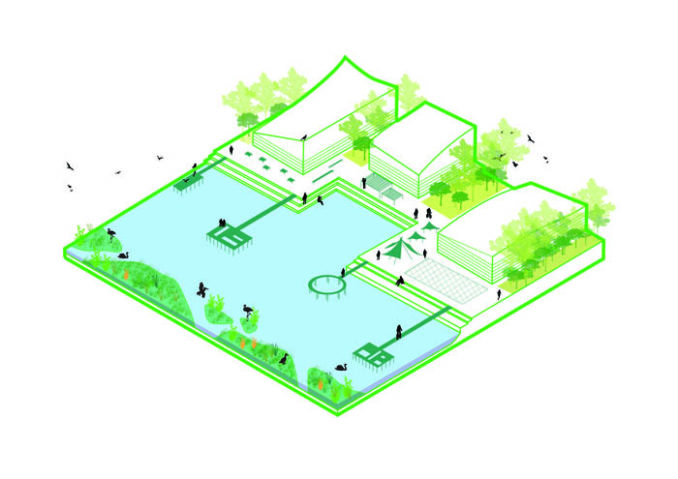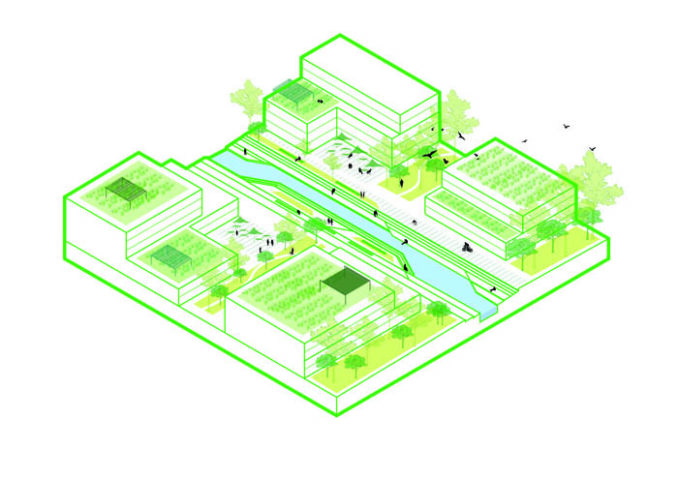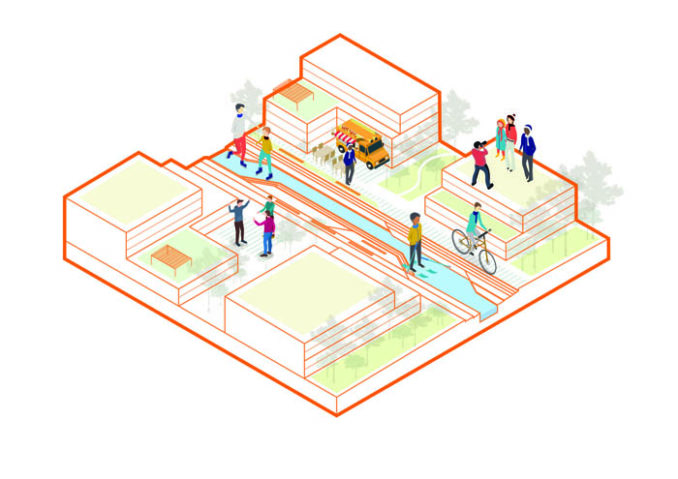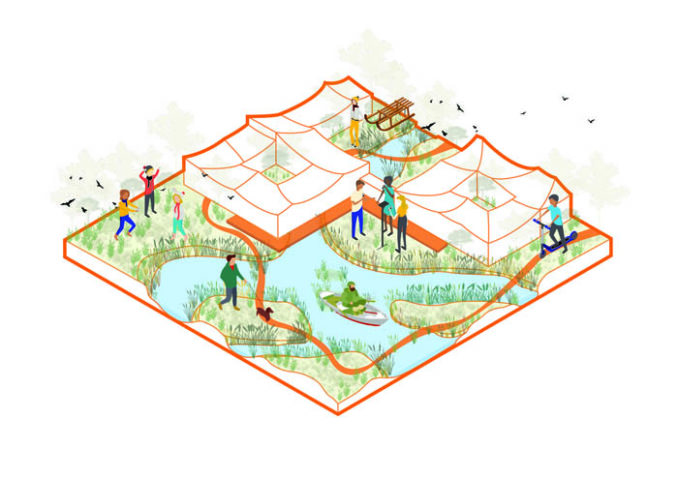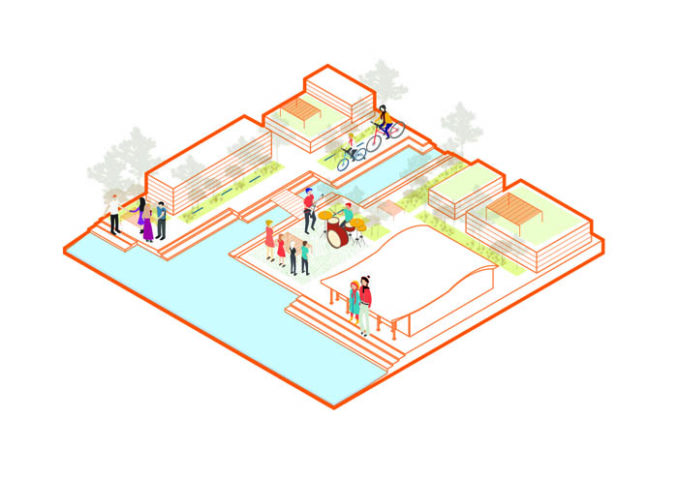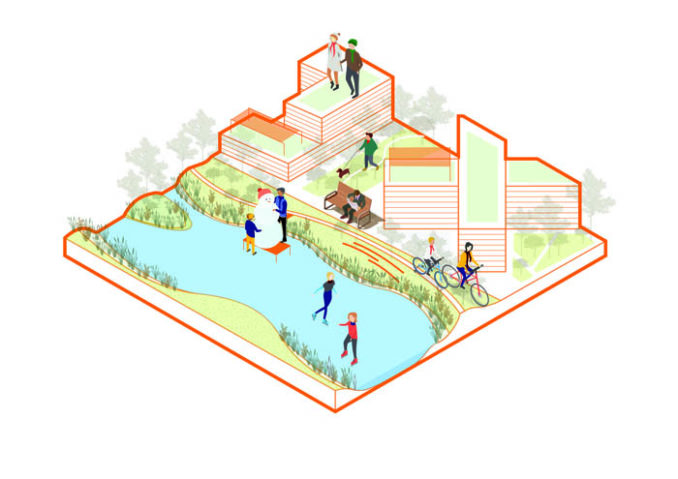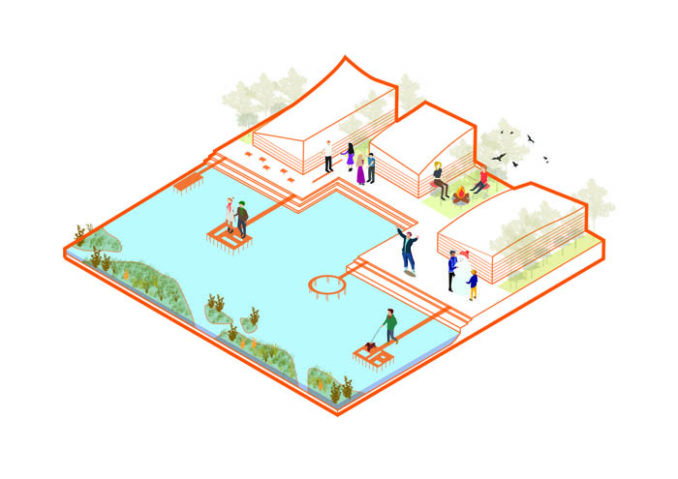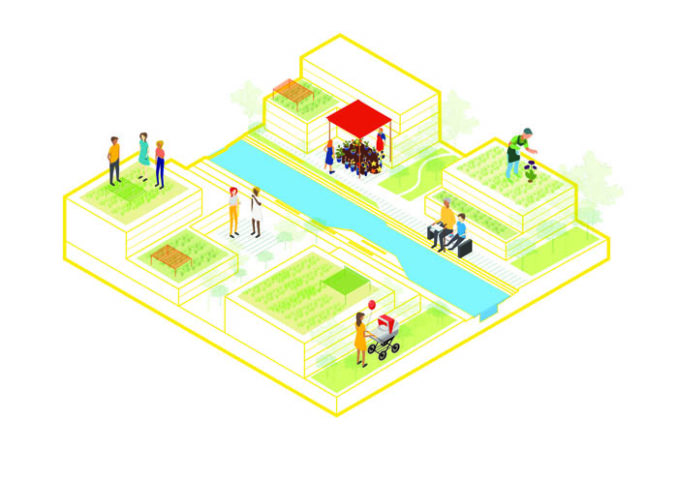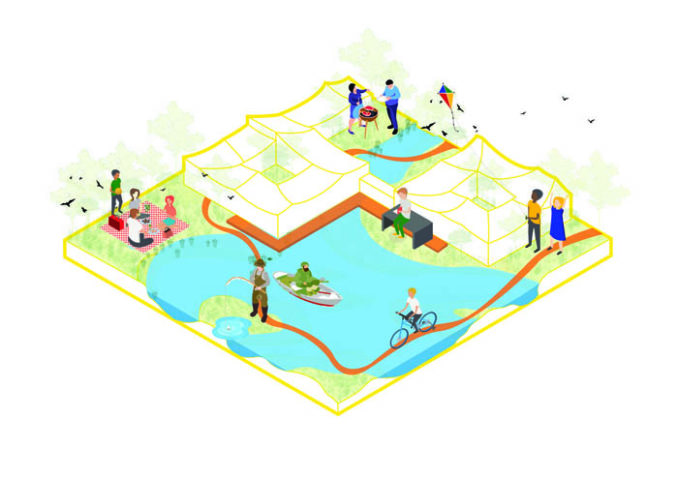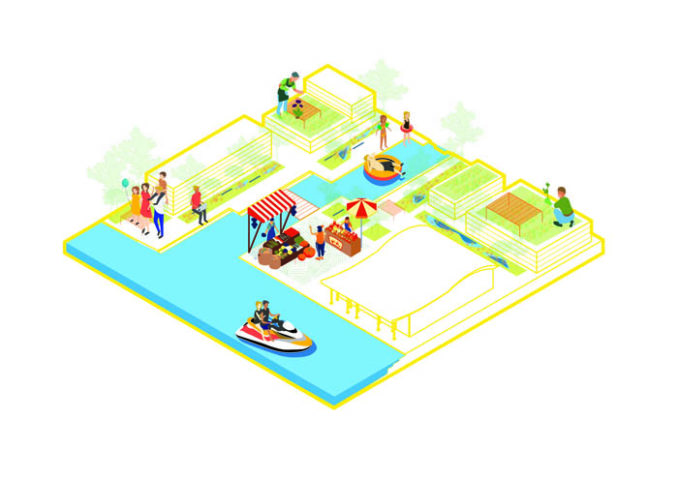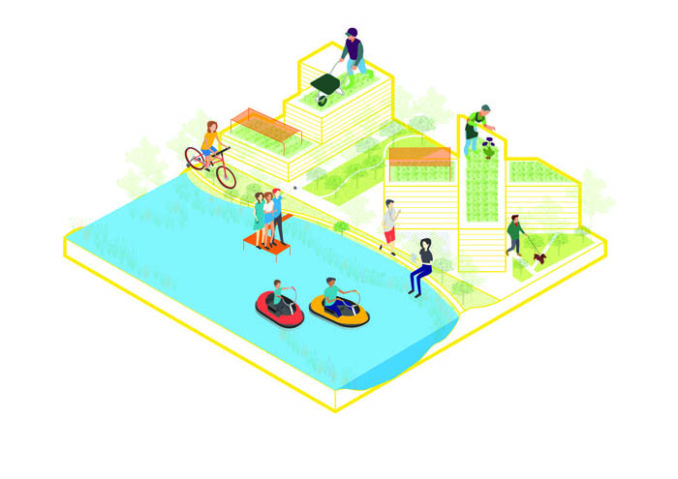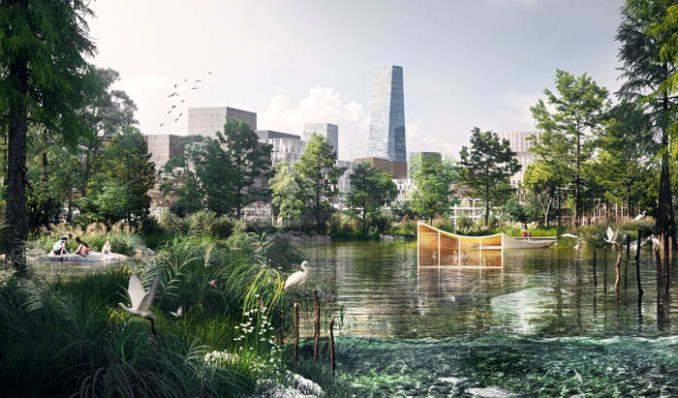
The International Competition for Strategic Planning and Conceptual Urban Design for Xiakewan Science City was organized by the Urban Planning Society of China and encompasses 8000 hectares of urban and ecological development alongside the Yangtze River.
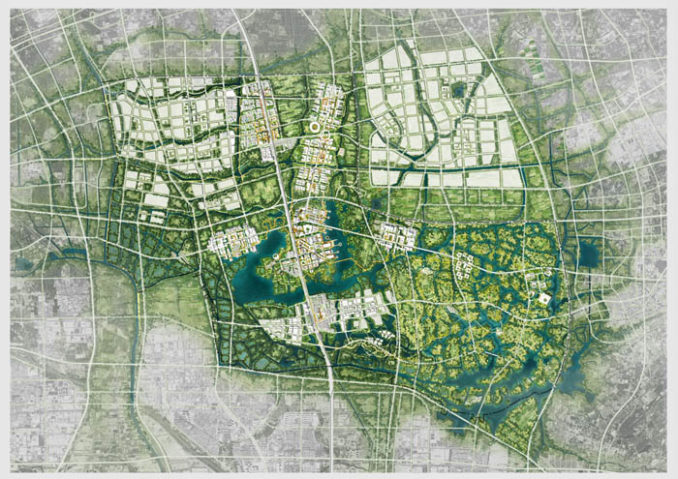
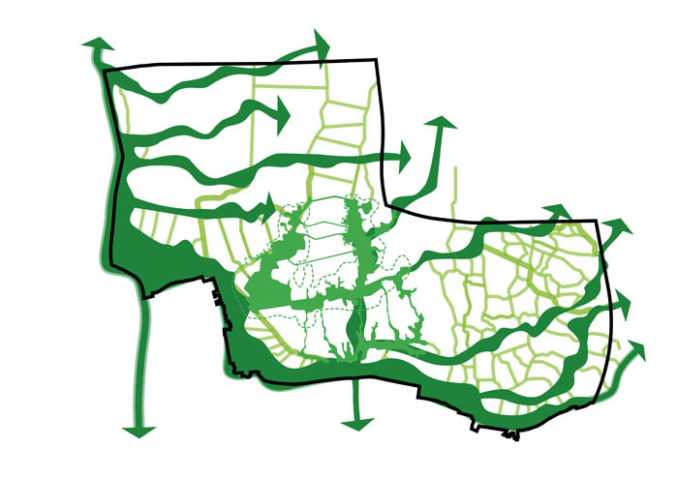
Green framework 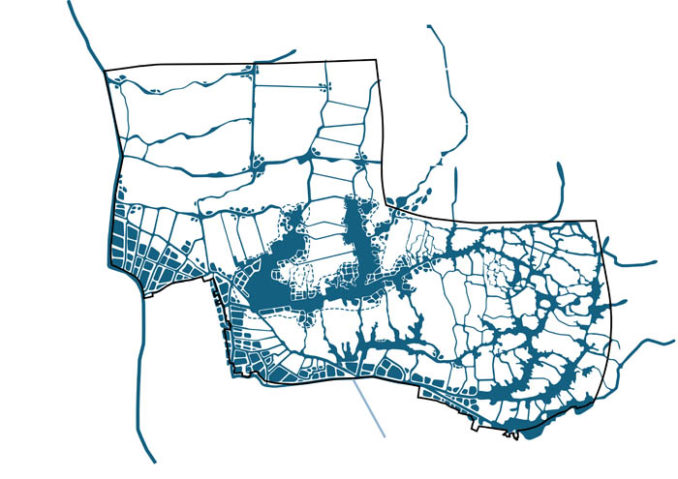
Blue framework 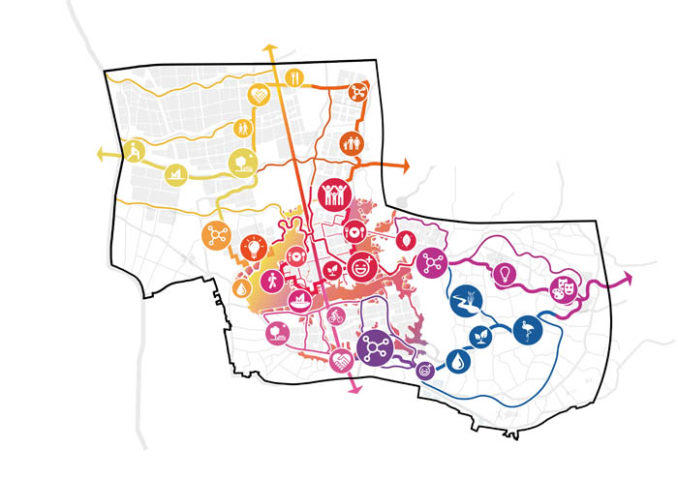
Experience framework
Xiakewan Science City
Located south of the Yangtze River, and on the banks of Tai Lake, Xiakewan Science City is positioned at a critical intersection of urban and ecological development. The new Science City will be deeply integrated with its local natural environment, protecting, enhancing, and maximising the health of the existing ecosystems in which the new city will be constructed.
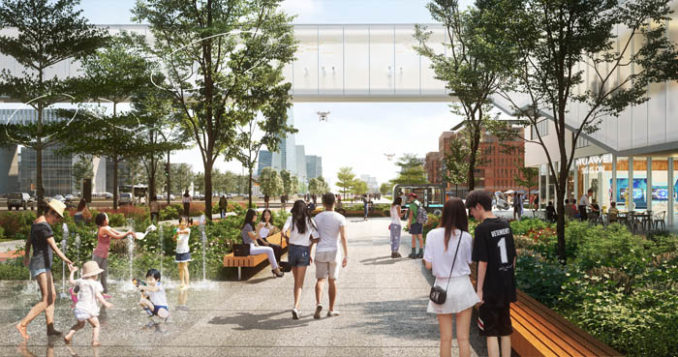
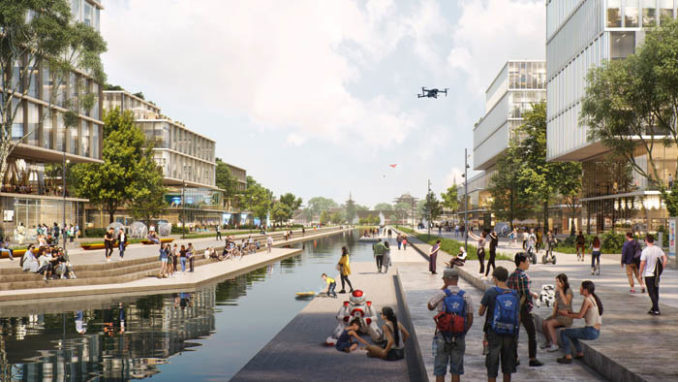
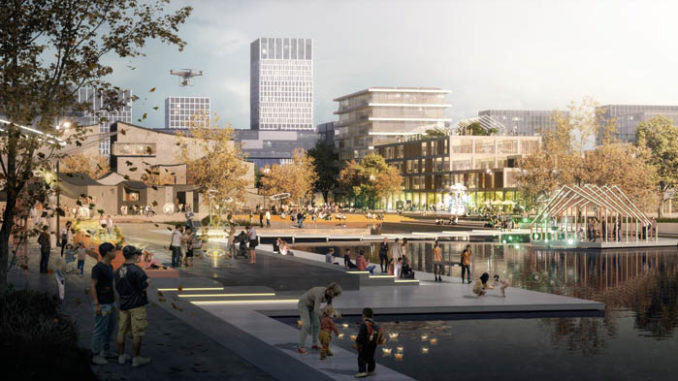
Blue Framework
The blue network is inspired by nature, learning from the form and structure of plant roots. The Yangtze River serves as the main waterway for the new urban development and is supported by the vast web of “roots” that create the connected and resilient system. The structure inherits and continues the logic of Jiangyin’s traditional city model that is organised around its relationship to its waterways.
The new network improves water quality by combining existing regional water bodies and strengthening them with the introduction of efficient cleaning and drainage systems.
Further quality improvements are achieved through the careful combination of engineering and ecological solutions. The Xiake Lake water purification system, retention of existing hydrological networks, protection and development of the Wenlin Wetlands, and integration of existing fishponds into the broader ecological network all play an important role in creating the blue network.
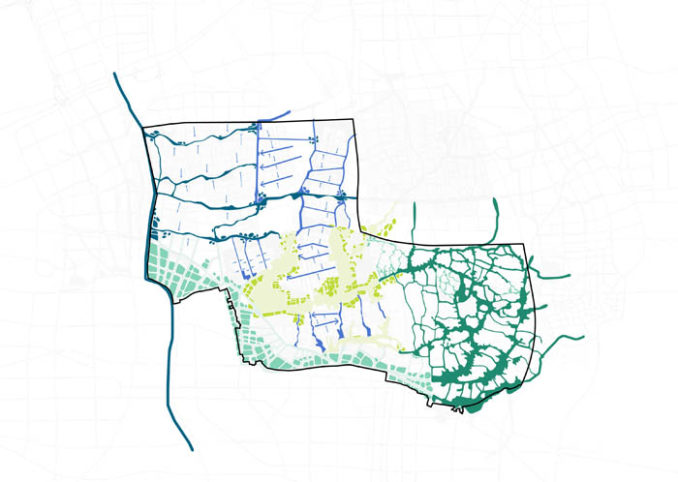
Stormwater management system 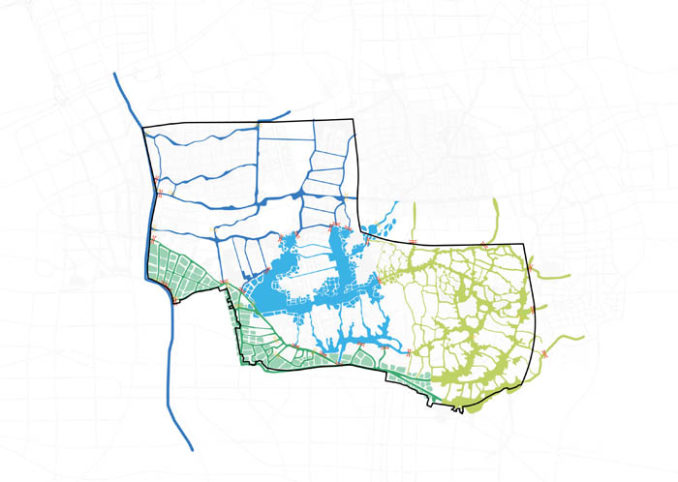
Water management system
Green Framework
The Green Framework closely follows the site’s water network, creating a continuous resilient landscape structure that supports and elevates the water systems. The forests wrap around and intersect urban areas to introduce natural qualities to the urban structure.
With its ecological ponds, wetlands and forests, The Central Lake area enhances biodiversity in the core of the site, creating a showcase of environmentally focused urban development.
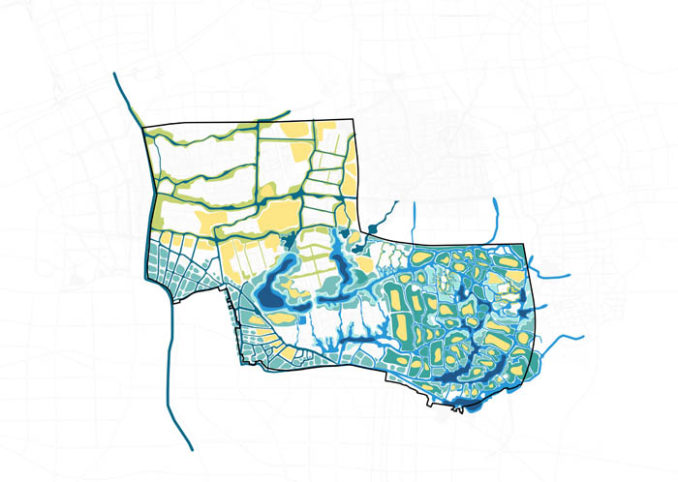
Core landscape and local ecological display window 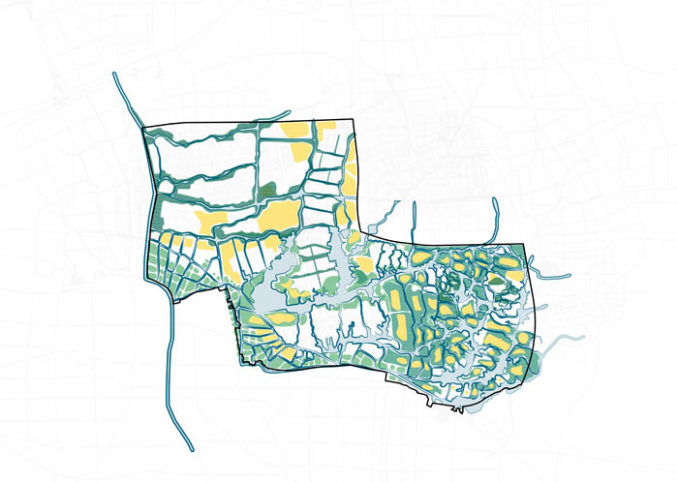
Enhanced regional ecological values
Experience Framework
The masterplan provides the new Science City with one bay and four banks. A series of vibrant public spaces trace the green and blue networks, supporting without compromising the natural systems. The structure concentrates urban life in the center of Xiakewan while limiting human activities and access in the surrounding wetland areas. This spatial division allows for the preservation and enhancement of local ecosystems while creating a poetic experience for those visiting the natural habitats.
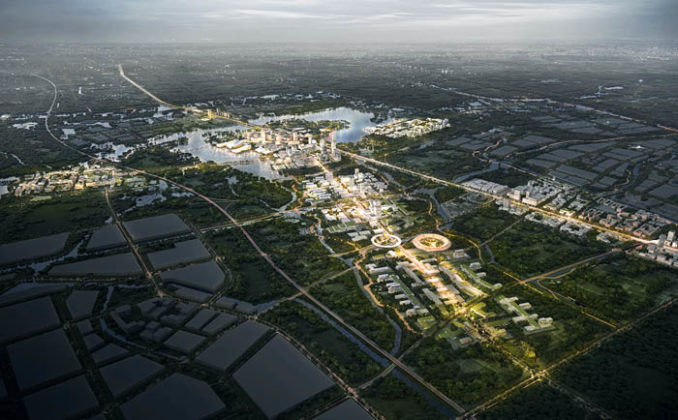
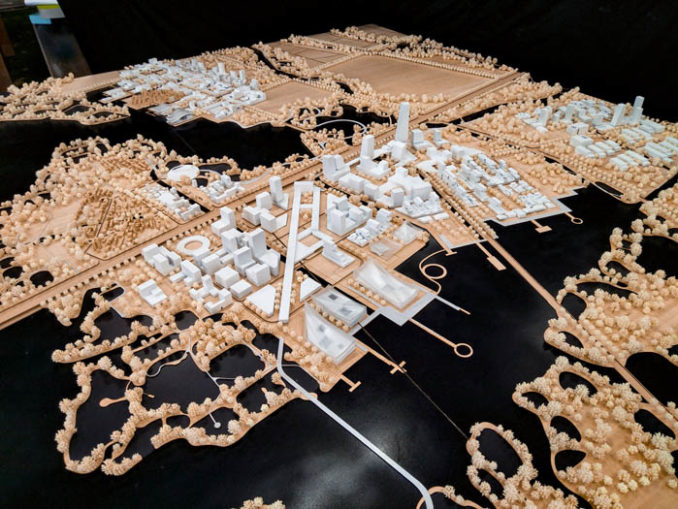
Resilient landscape
The ecological strategy for the project evolved through deep analysis and evaluation of the existing landscape qualities and assets. The Intertwined green and blue networks combine existing and new forests, ponds, wetlands to form a robust and resilient ecosystem.
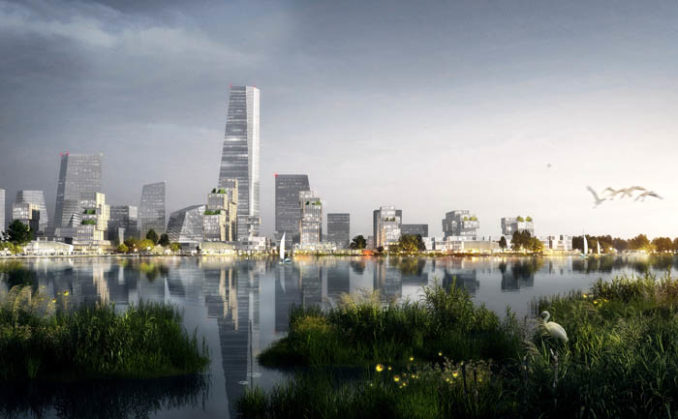
One bay, four banks
Xiake Lake, with its one bay and four banks, connects agricultural landscapes and natural restoration areas with future residential developments. The bay and banks create urban leisure and recreational destinations to be enjoyed by Xiakewan inhabitants and integrate the qualities of the rural landscape into the new urban centre.

Weaving corridors
Blue-green corridors running through the development weave together neighbourhoods, districts, and ecological zones. Design strategies are applied to spaces surrounding the urban cluster, enriched by city-making programs, including community services, entertainment facilities, commerce, cultural and public institutions. The activated water bank becomes a catalyst for a thriving urban life.
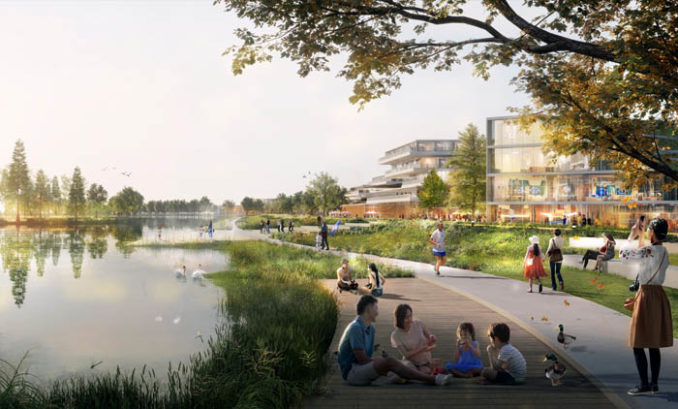
Reed villages
Innovative settlements are designed to embrace the water, with public and shared spaces gathered around the wetlands’ edge. The new communities take on a memorable, unbounded character embedded in the poetic river landscape.
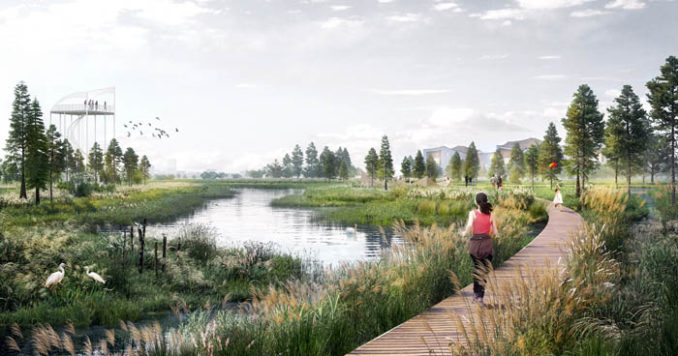
Jiangyin Xiakewan Science City Master Plan
Location: Jiangyin, China
Designer: Mandaworks + UPDIS
Client: Jiangyin Municipal Natural Resources and Planning Bureau
Image Credits: Mandaworks + UPDIS

